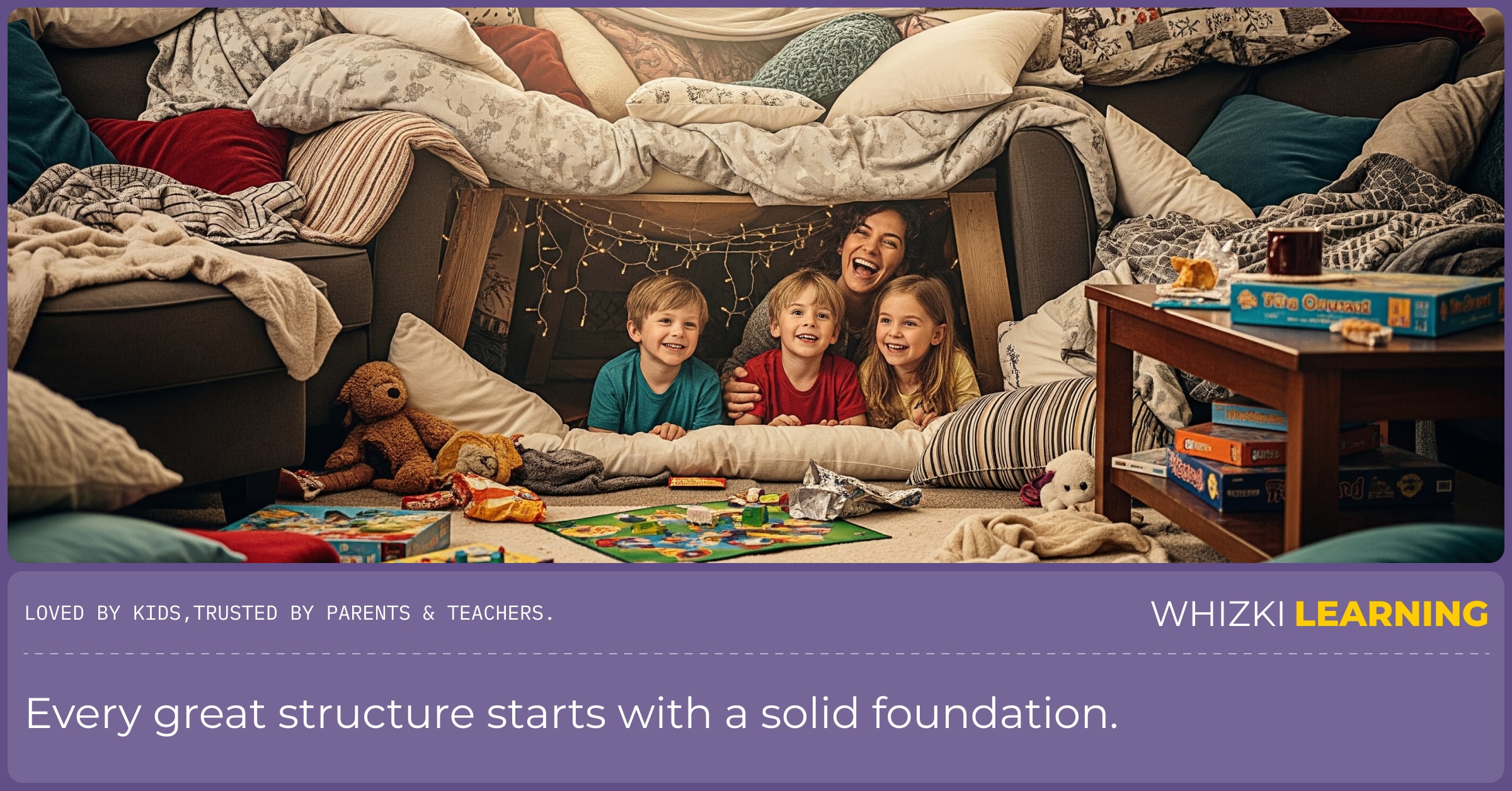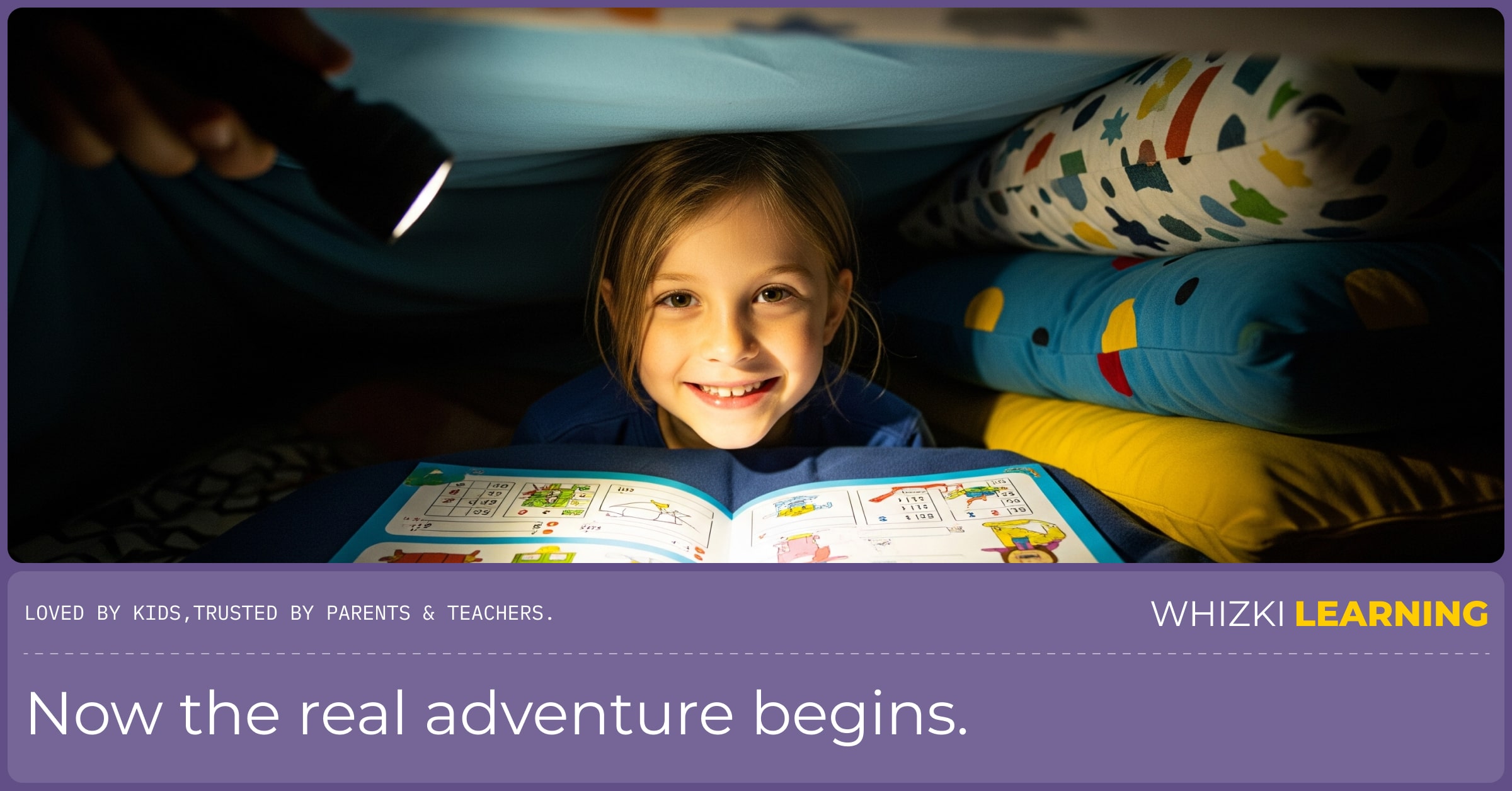It is a child's first act of architecture. With nothing more than couch cushions and a wild imagination, they create a structure, a space, a world entirely their own. To our adult eyes, it’s a temporary mess. To them, it's a castle, a spaceship, a secret cave. The pillow fort is a universal rite of passage, but it's also one of the most profound, multi-layered learning experiences in all of childhood.
We often focus on 'educational' toys and structured activities, but we overlook the genius happening right in the middle of our living rooms. It's time to put on our scientist goggles and deconstruct this amazing phenomenon. Let's explore the 'Anatomy of a Fort' and reveal the incredible developmental work happening inside that beautiful, beautiful mess.
Play is the work of the child.- Maria Montessori
Layer 1: The Foundation (Engineering & Gross Motor Skills)
Every great structure starts with a solid foundation. For a fort, this means the heavy lifting: moving couch cushions, dragging chairs, pushing ottomans into place. This isn't just manual labor; it's a full-blown physics and physical education lesson.
The Science: As they wrestle with heavy cushions, children are getting powerful proprioceptive input-what we call 'heavy work.' This is deeply calming and organizing for the nervous system. They are intuitively learning about stability, weight distribution, and balance. As we explored in our guide to movement and learning, this 'big body' work is essential for building the core strength required to later sit and focus on a task.
Parent as 'Consulting Architect': Ask open-ended questions that spark their engineering mind. 'What do you think would make a stronger base for our wall, this big square cushion or these two little ones?'

Layer 2: The Walls & Roof (Problem-Solving & Fine Motor Skills)
Once the foundation is set, the real challenge begins: creating the enclosure. This is where blankets are draped, sheets are stretched, and inevitable collapses occur.
The Science: This phase is a masterclass in resilience and iteration. When a wall inevitably collapses, the child is faced with a problem. They must try a new strategy: pull it tighter, find a better anchor point, use a lighter blanket. This process of trial, failure, and adaptation is the very heart of a growth mindset. Using clothespins or chip clips to attach blankets to chairs is also an incredible fine motor skill workout, strengthening the very muscles needed for handwriting.
Parent as 'Safety Inspector': Your role here is to ensure safety, but also to celebrate the process. When it falls, don't rush to fix it. Say, 'Oops! A structural failure! What did we learn, engineer? Let's rebuild!'
Layer 3: The Interior (Emotional Safety & Autonomy)
Why are children so drawn to small, enclosed spaces? A fort is a child's first attempt at creating their own 'home' within a home. It's a space that is perfectly scaled to them, and one where they are in complete control.
The Psychology: In a world managed by giants, the fort is their domain. They decide who comes in, what the rules are, and what happens inside. This sense of autonomy is a powerful builder of self-esteem and confidence. It’s a cozy, safe haven where they can process their thoughts, engage in imaginative play, and feel a sense of security, which is a key part of the daily connection habits we encourage.
Layer 4: Life Inside (Creativity, Focus & The 'Field Guide')
The construction is complete. Now the real adventure begins. The fort becomes the clubhouse, the secret base, the place for the most important 'missions.'
The Activities: The inside of a fort is the perfect environment for deep, imaginative play. It's a natural 'no-screen zone' that invites quiet activities.
The Whizki Connection: Frame one of our workbooks as the fort's official 'Explorer's Journal' or 'Secret Mission Log.' A flashlight and a puzzle and maze workbook are no longer 'practice'; they are the tools for a secret agent. The fort's cozy, distraction-free environment makes it one of the best places to build the deep focus and concentration we talk about in our guides.

The Perfect Treasure for Your Castle
What's the best treasure to bring into a secret fort? A flashlight and a brand-new Whizki workbook. Our engaging activity books for kids are designed to feel like a collection of exciting missions, not a list of chores. They are the treasure you find inside the castle, the secret map that leads to new skills, and the perfect quiet chapter in a day of loud, joyful, constructive mess.






